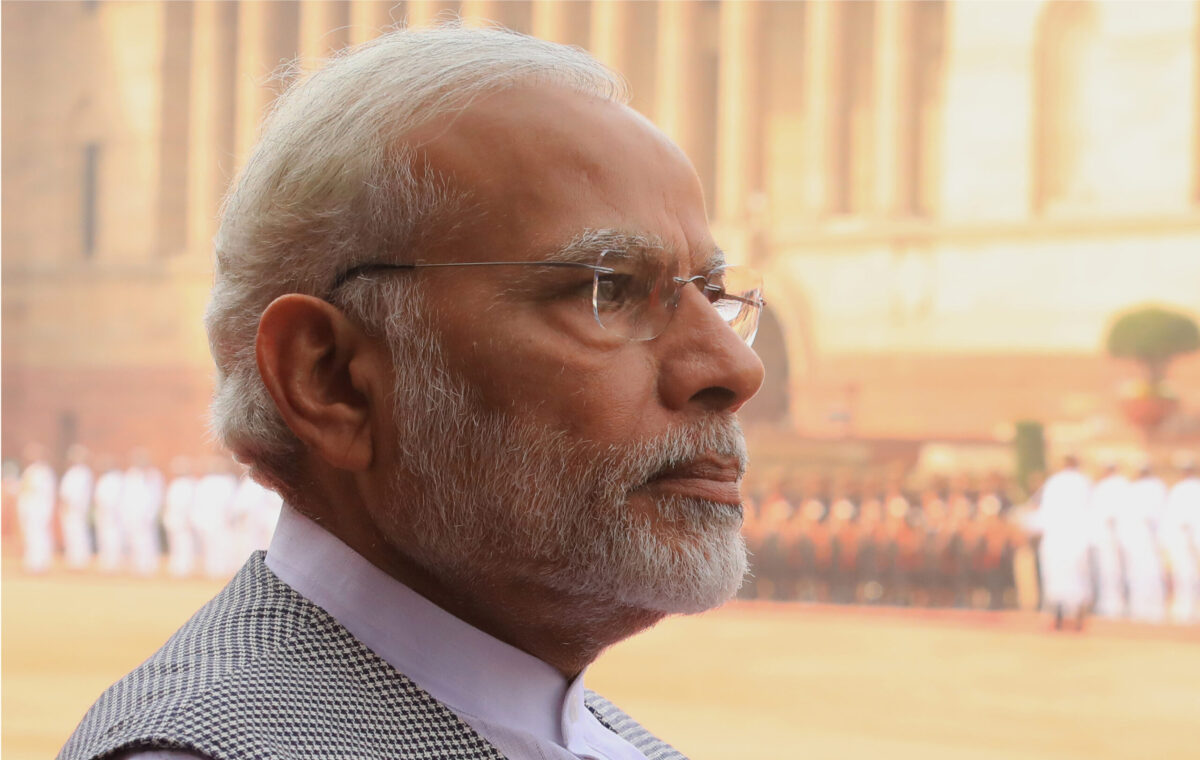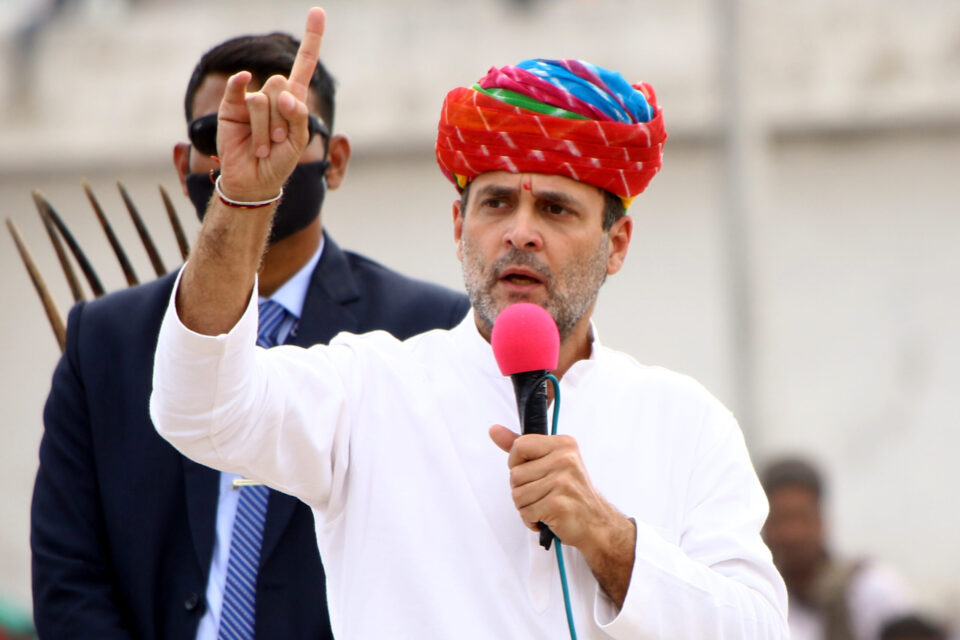The power struggle currently underway in India will shape not only the world’s largest democracy and its economic course but will also have effects of planetary proportions

Author: Ljiljana Vujić
Indian elections, due to their scale, will be called historic on June 4th. This description will be justified not only because the electoral process from April 19 to June 1 is the largest, most populous, and most challenging the country has ever experienced. India is often spoken of in superlatives from various aspects, the most important being the path of the world’s fastest-growing economy India has embarked on, which will become irreversible if Prime Minister Narendra Modi wins a third term. Confirmation of the status quo through his re-election will bring enormous changes to India.
In a year that began with crucial elections in Taiwan in January and will end with the U.S. presidential election in November, with several significant votes for Europe, such as those for the European Parliament, in the meantime, the current voting in India is of global importance. Why? Because it involves determining the future Indian government’s alignment between China and the USA, between the “East” and the “West.” India is on the verge of achieving the title of the third-largest world economy, and in this regard, Modi’s likely triumph will be crucial. Therefore, his defeat would also be historic, although it seems almost impossible despite the main strong opposition coalition of as many as 28 parties.
Even though Modi has not fulfilled some promises during his previous two terms, including tackling unemployment, the results of the world’s largest and most expensive elections will show that he remains undeniably the most dominant figure on the local political scene, whose position has not been undermined even by Rahul Gandhi and his Indian National Congress. This party and its leader, a descendant of the Nehru-Gandhi political dynasty, carry the strength of historical context but insufficient to defeat Modi and his political course.
Let us recall that Rahul’s great-grandfather Jawaharlal Nehru was the first Indian prime minister after gaining independence in 1947, his grandmother Indira was a prime minister, and then his father Rajiv, while the Indian National Congress governed the country for most of the independence period. Nevertheless, it seems that the son of a tea seller from a humble family will hold the reins of the country for the next five years, just as he has for the past ten, determined to create an economic tiger. Forecasts suggest that Modi’s Bharatiya Janata Party, along with regional allies, could achieve a more convincing victory than in 2019.
Thus, on June 4th, when the results are announced, it will become clear that Rahul’s formation of a broad alliance with a series of regional parties, and his campaign to “save democracy from a man who insists on Hindu nationalism and abandoning the secular concept advocated by Nehru and the leader of the Indian independence movement Mahatma Gandhi,” did not help. Although at this moment the actual voting process is of the least significance, its nature still deserves some attention because it regulates the largest electorate on the planet over six weeks.
The Largest Elections the World Has Ever Seen
It is enough to say that in a month and a half, around 970 million voters will exercise their right to vote at more than a million polling stations, which would be roughly equivalent to having the citizens of the USA, Russia, and the European Union vote together. In the most massive elections, 2,700 parties are participating, although the focus is on two main actors—Modi and Gandhi. The campaigns have cost far more than last year, when eight billion dollars were spent. Rumor has it that the figure is at least 14 billion, which greatly exceeds the renowned U.S. presidential elections.
India is on the verge of achieving the title of the third-largest world economy
The following facts are also spectacular: millions of electronic voting machines are used for voting. In the marathon race for the election of MPs in the Lok Sabha, the Lower House of Parliament, who then elect the Prime Minister who chooses the ministers, around 15 million election activists are involved. They travel by camels, trains, boats, and helicopters to reach every Indian voter. To provide a vivid sense of the scale of this event, it’s notable that in one village on the border with China, at an altitude of 4,700 meters, the “highest polling station” in the world was set up.
Activists cover a vast area (India spans 3.3 million square kilometers) because the rules are clear and strictly followed, stating that there must be a polling station near every settlement—even in a remote forest area of the Gujarat National Park where only one man lives. The countdown to the announcement of Modi’s victory continues with accompanying interesting facts, such as those about the electoral process or those about the Prime Minister’s upbringing, his rise from a humble family, the son of a tea seller and an outsider in the elite political circles of Delhi, to the very top, which is atypical for a country where family connections define success. In such circumstances, Modi has become a brand stronger than his party. If you were to remove him from the scene, the ruling party would fall apart.

The Driver of South Asia’s Economic Growth
In the field of economics, Modi advocates for the removal of all capital restrictions, which were significant in the first five decades of independence. Everything required state approval, from building a factory to getting permission to increase production if it exceeded the set limits. This year, India will achieve more than double the economic growth (6.8 percent) compared to the average of all other countries (3.2 percent). The general elections are marked as the most important in the last few decades. Narendra Modi is a widely popular leader under whom India has become the fastest-growing economy in the world on its way to achieving economic superpower status. At the same time, Modi is known as a prime minister who has impressively raised the political and economic profile of the country on the international stage during his decade-long administration. In foreign policy, he has focused on building ties with the United States, which views India as a counterbalance to China’s expansion. India has increasingly better relations with the West, which, in its efforts to curb Beijing, is shifting production to this country that simultaneously has enviable relations with Russia and China. A founding member of BRICS, and chair of the G20, with admirable relationships with the West, Asia, Africa, and around the world, India is also a country of contrasts and upheavals. On one hand, in a state where the Muslim minority numbers around 200 million people, one of the crowning achievements of Prime Minister Modi’s government is the inauguration of the Ram Janmabhumi Mandir, a Hindu temple in the holy city of Ayodhya, built on the site of the Babri Masjid mosque from the 16th century, which was violently demolished in 1992.
In the most massive elections, 2,700 parties are participating, although the focus is on two main actors—Modi and Gandhi
On the other hand, India has managed to send a module to the Moon. Meanwhile, youth unemployment at the end of last year was 44.3 percent, and almost a quarter of the population was illiterate. Despite having one of the highest growth rates in recent years, India has not solved the problems of unemployment and inequality, which will continue to be enormous challenges for the country, despite the bright forecasts. The World Bank predicts that South Asia will be the fastest-growing market, with India’s economic performance being the main driver. Modi has implemented incentive programs with the promise that by 2029, India will become the third-largest economy in the world, surpassing Japan and Germany, as also projected by the IMF. The Biden administration encourages American companies to shift production from China to friendly countries, particularly Vietnam and India. India’s electronics exports to the US reached $6.6 billion last year, up from $2.6 billion the previous year. However, to surpass Vietnam, Modi must first reduce taxes, and this will undoubtedly be the year many duties will be abolished. Nevertheless, the solution is not so simple in the long term because foreign investors are more interested in business flexibility, especially in hiring and firing, which is Vietnam’s main long-term advantage over India. There is also the question of infrastructure, in which China is far more advanced. Analysts are paying great attention to India’s shift toward centralized governance, which could harm overall growth, something the country has experienced in the past. Therefore, the focus should be on a series of structural reforms necessary to maintain a higher GDP growth rate in the long term, which is a significant challenge.
The opposition attempts to capitalize on these issues, as well as on the problem of inequality, accusing the government of extinguishing the country’s decades-long commitment to multiparty democracy and secularism. Tensions between Hindus and the Muslim minority have escalated in recent years. However, investors view India differently because market sentiment is simple—the effects of economic growth are felt on the stock markets. They particularly monitor shares in the industrial and defense sectors, which are at the heart of Modi’s reforms aimed at strengthening domestic production. The BSE industrial index has jumped by over 300 percent in the last five years.